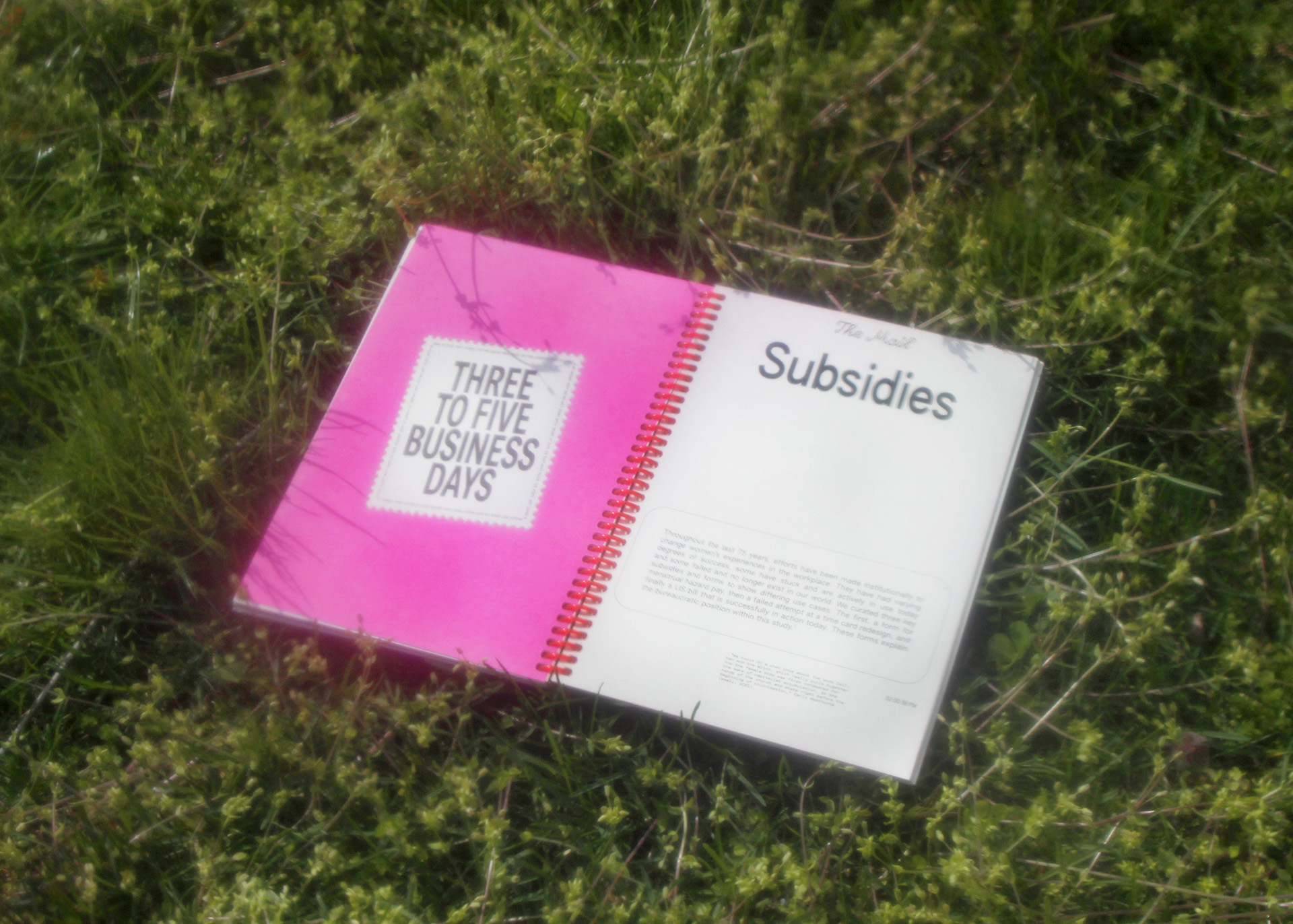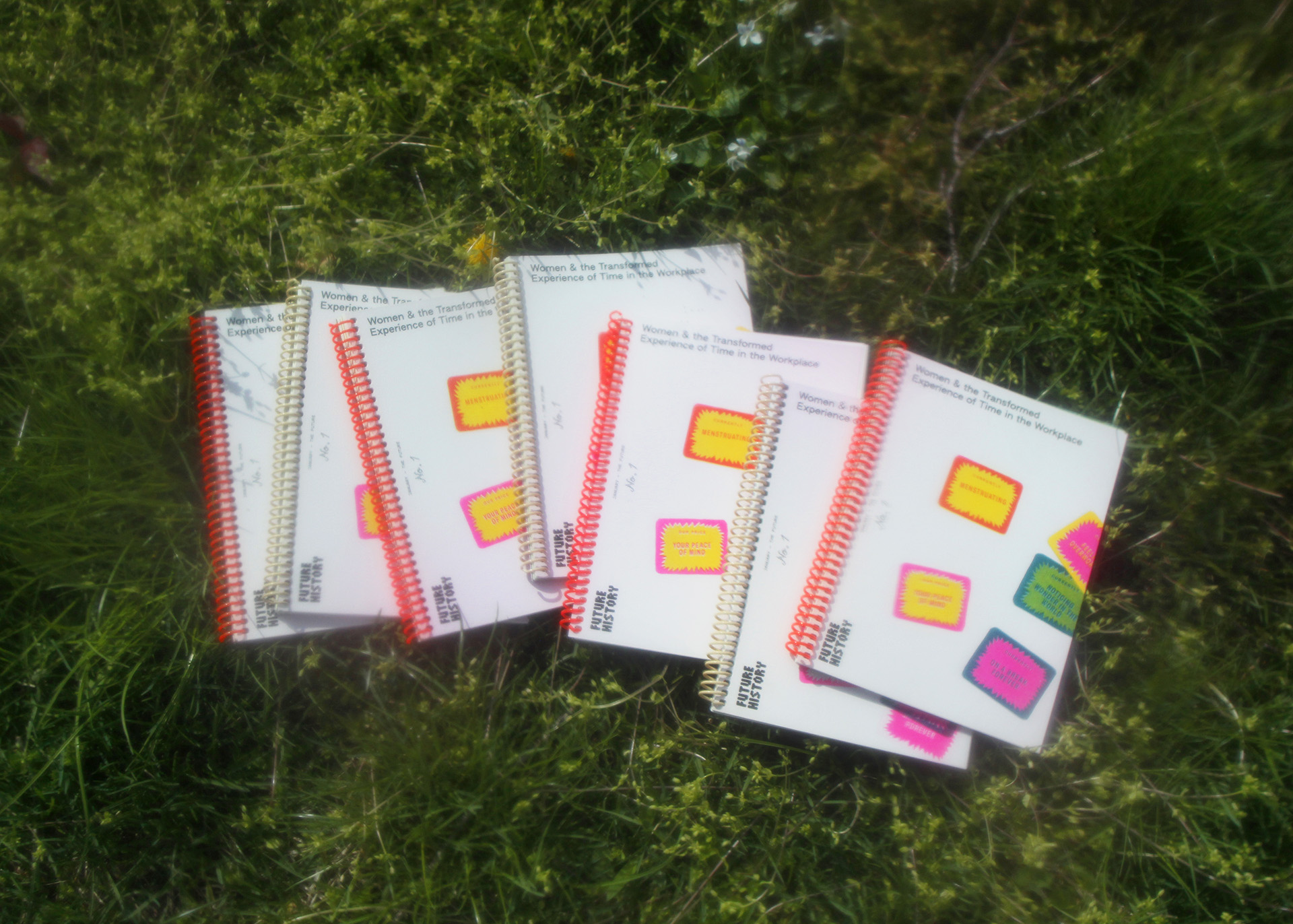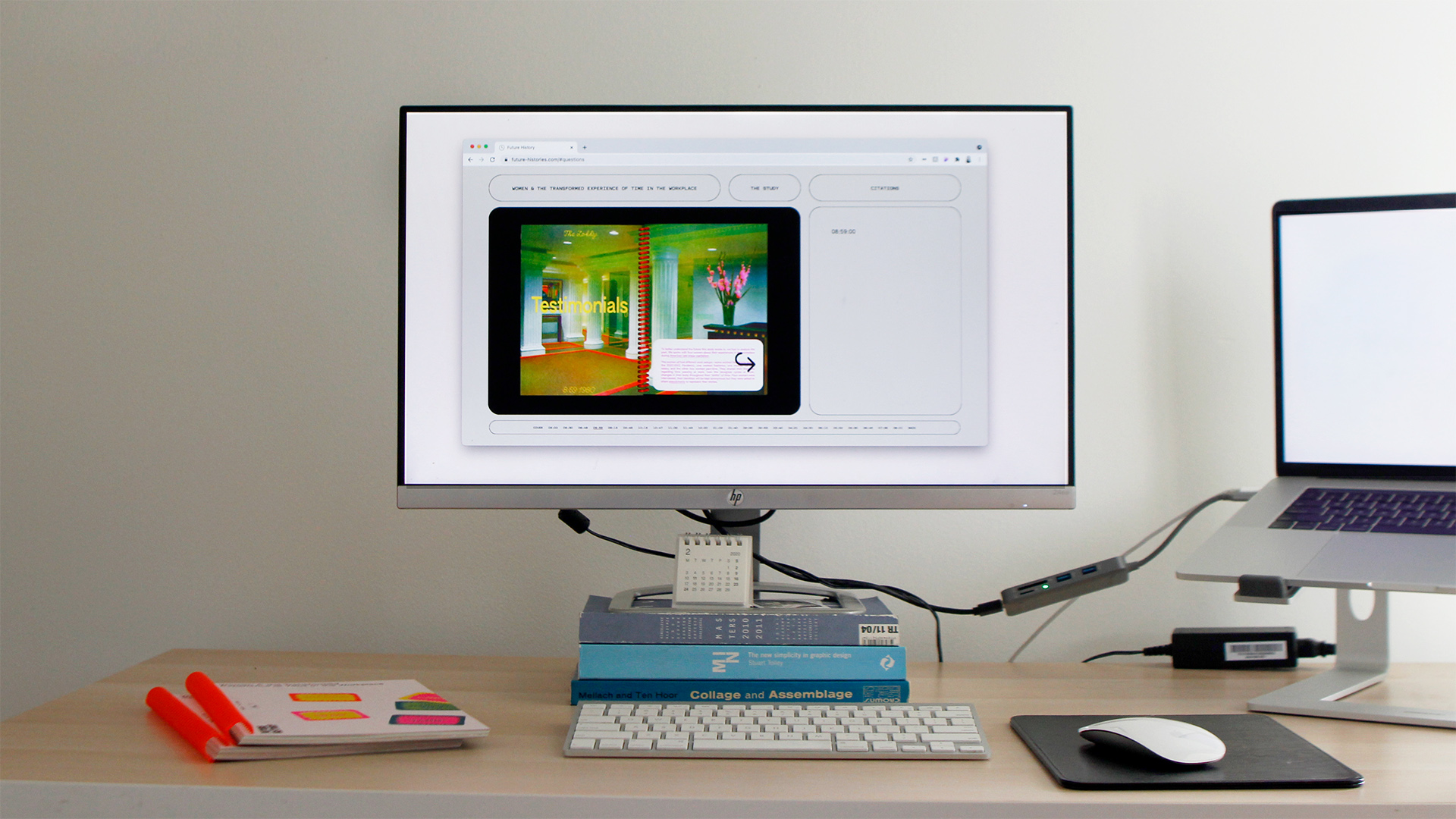Women & the Imagined Experience of Time in the Workplace
Women's relationship to time in the workplace is complex—days, hours, and minutes become a method of control and constraint, but when time is returned it becomes a reclamation of slowness and intention. The modern work environment was crafted without regard to women; the traditional perception and function of “work” in the United States is based on the male body and male productivity as a way to feed a capitalist economy.




The research I conducted around this relationship led me to the question: "How would American work culture operate if it was built to serve women and the cyclical nature of their bodies?”
As a response, my process began with redesigning artifacts from the workplace—keyboards, timecards, and job listings—to challenge the understanding of how time functions for women. I created an imaginary study printed on a risograph with a digitized e-book that held these excavated artifacts, titled “A Future History: Women & the Transformed Experience of Time in the Workplace.”
As a response, my process began with redesigning artifacts from the workplace—keyboards, timecards, and job listings—to challenge the understanding of how time functions for women. I created an imaginary study printed on a risograph with a digitized e-book that held these excavated artifacts, titled “A Future History: Women & the Transformed Experience of Time in the Workplace.”




Set 75 years in the future, this fictional study exists as an alternative to women’s current experience in the workplace. In an abstract and whimsical way, the study breaks down “the past 75 years” from 2021 to 2096 and the objects and subsidies attempted to relieve the way women experience time at work.
To inform my speculations on the way this world looks, runs, and connects, I conducted interviews with four women on their current work experiences. This prompted conversations about fatigue, career frustration, and menstrual cramps. These interviews and the research of other women’s work about speculating futures provided insight to a feminist, abundant web of women and a shared dissatisfaction, but also a shared imagination.
To inform my speculations on the way this world looks, runs, and connects, I conducted interviews with four women on their current work experiences. This prompted conversations about fatigue, career frustration, and menstrual cramps. These interviews and the research of other women’s work about speculating futures provided insight to a feminist, abundant web of women and a shared dissatisfaction, but also a shared imagination.

E-Reader
This web of sources exists as citations throughout the study that connect the actual research and the imaginary observations. The footnotes act as a link between the work that influenced my thinking and the form and content of the study. In the e-reader version, these citations become an interactive archive of imagined futures for women, a resource I will keep alive that can change and grow as my own perception of this future evolves.